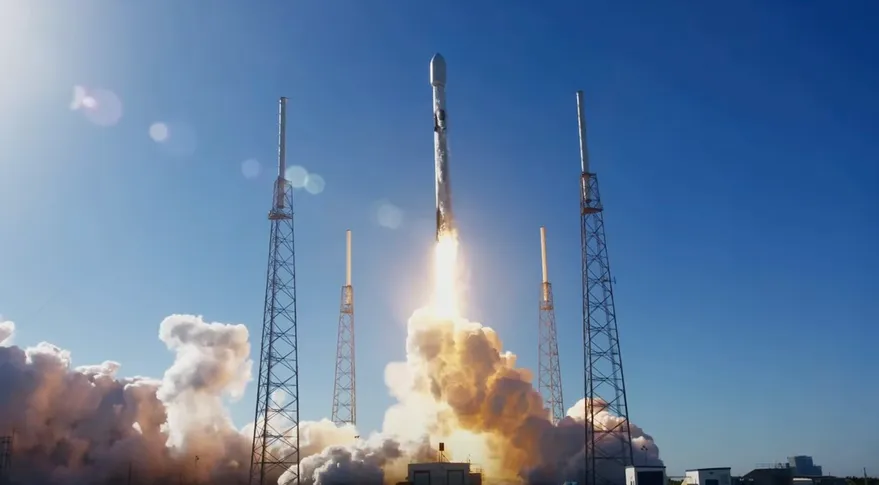On the morning of Saturday, Nov. 18, a massive roar shook south Texas as SpaceX launched the second test flight of their new Starship rocket, eventually intended to transport people to Mars and beyond. With a mass of over 5,000 tons and twice the power of NASA’s Saturn V moon rocket, Starship will be the world’s largest rocket once it is operational. Starting in 2019, short “hop” tests were performed, hovering a test vehicle a short distance above the ground before performing a powered landing.
After this, SpaceX worked on testing the vehicle for orbital launches. An initial test flight took place in April 2023, reaching approximately 25 miles in altitude before losing control and failing. Since then, SpaceX has been working on improvements to the next prototypes, intended to make them more successful, in anticipation of the second test flight.
For the first two and a half minutes of the flight, everything appeared to be going perfectly. All 33 rocket engines on the first stage were running without any issues, in contrast to the numerous engine failures experienced on the rocket’s first flight. Separation of the two stages also appeared to go smoothly, with 30 engines shutting down before the second stage ignited in a process known as “hot-staging,” in which the second stage ignites while the first stage is still attached to ensure continued acceleration.
Once the second stage ignited, the first stage separated and began to flip around 180 degrees, intending to return to a soft landing in the Gulf of Mexico. However, during this flip maneuver, multiple engine failures occurred, ending with the activation of the stage’s self-destruct mechanism. This caused the booster to explode 55 miles over the Gulf of Mexico; meanwhile, the second stage continued flying normally, reaching almost 15,000 miles per hour and 92 miles in altitude before its self-destruct system was triggered too, ending the test flight.
Almost immediately after the end of the flight, multiple investigations and theories were proposed as to what had caused the launch to fail. One early theory, proposed after the first stage was destroyed, was that SpaceX was intentionally testing the self-destruct system. During the first flight, the self-destruct system was triggered but was too weak to destroy the rocket, causing it to continue flying until it broke up due to aerodynamic forces.
As a result, a more powerful system was installed, so SpaceX may have wanted to perform an in-flight test. However, this is unlikely, as an intentional test would likely have only involved one of the two stages and been announced in advance.
Another and more likely explanation for the first stage failure is related to the multiple engine failures experienced during the flip. Rocket engines are very sensitive to consistent fuel flow, and even a small number of gas bubbles in the flow can cause catastrophic damage. During the flip, centrifugal forces may have caused the fuel to “slosh,” allowing gas to enter the engines and cause the multiple failures that were observed; the onboard computers could have detected these anomalies and triggered the self-destruct system.
A third potential explanation of this scenario does not involve the self-destruct system at all. Shockwaves from the engine failures could have propagated up the fuel system, causing an internal failure of the rocket’s fuel tanks that led to an explosion as fuel and oxygen mixed. It is difficult to determine which of these happened, as the explosion was observed to originate from an area of the stage that was near both the self-destruct explosives and the barrier between the fuel and oxygen tanks.
As for the second stage, determining what happened is more difficult due to less evidence. With the first stage, clear camera views were available; however, by the time the second stage exploded, it was only a small speck in the sky.
Despite this lack of evidence, there is still one proposed theory. After a certain point in the flight, some observed that the oxygen level broadcast on the official webcast started decreasing faster than it should have compared to the fuel level. This would indicate a leak, which may have also been faintly visible.
Again, there are two possible paths this theory can take. The flight computers may have detected that due to the leak, there would not be enough fuel to reach the desired trajectory and triggered the self-destruct system. The leak could have also directly led to a fire, causing the explosion as well.
There are several different possible explanations for what went wrong during this test flight. Over the course of future tests, SpaceX will conduct their own investigation to determine the issue and how it can be fixed for the next flight. Once this is complete, any necessary modifications will be implemented and the next set of prototypes will be prepared for testing in preparation for the next flight, which is currently scheduled to take place within a few months.


























